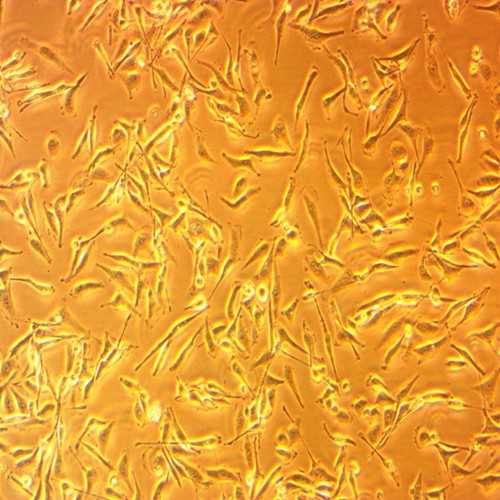U2OS-LacO-I-SceI-TetO Cell Line
U2OS bone osteocarcinoma cell line integrated with I-Scel endonuclease site in-between a lac operator (lacO) sequence and a tet operator (TetO) sequence. This allows for a Lac-repressor/operator-tethering system designed to probe the role of chromatin condensation in DNA damage response (DDR).
Highlights:
- Consists of 10 kb tandem arays of the Lac operator (lacO) sequence adjacent to an I-SceI endonuclease site stably integrated into human U2OS cells at two different chromosomal locations
- Defined chromatin domains can be generated by virtue of tethering fusion proteins between chromatin modifiers and the Lac repressor (LacR) protein, which binds with high affinity to the lacO regions
DNA repair is a collection of processes by which a cell identifies and corrects damage to the DNA molecules that encode its genome. U2OS is an established human epithelial cell line isolated back in the 1960s from a 15 year old female suffering from bone cancer or osteosarcoma. The cells came from a moderately differentiated sarcoma on the tibia and allow for fast growth and have been shown to have high transfection efficiencies.
From the laboratory of Tom Misteli, PhD, National Cancer Institute/NIH.
U2OS bone osteocarcinoma cell line integrated with I-Scel endonuclease site in-between a lac operator (lacO) sequence and a tet operator (TetO) sequence. This allows for a Lac-repressor/operator-tethering system designed to probe the role of chromatin condensation in DNA damage response (DDR).
Highlights:
- Consists of 10 kb tandem arays of the Lac operator (lacO) sequence adjacent to an I-SceI endonuclease site stably integrated into human U2OS cells at two different chromosomal locations
- Defined chromatin domains can be generated by virtue of tethering fusion proteins between chromatin modifiers and the Lac repressor (LacR) protein, which binds with high affinity to the lacO regions
DNA repair is a collection of processes by which a cell identifies and corrects damage to the DNA molecules that encode its genome. U2OS is an established human epithelial cell line isolated back in the 1960s from a 15 year old female suffering from bone cancer or osteosarcoma. The cells came from a moderately differentiated sarcoma on the tibia and allow for fast growth and have been shown to have high transfection efficiencies.
From the laboratory of Tom Misteli, PhD, National Cancer Institute/NIH.
This product is for sale to Nonprofit customers only. For profit customers, please Contact Us for more information.
| Product Type: | Cell Line |
| Name: | U2OS |
| Cell Type: | Bone Osteosarcoma |
| Organism: | Human |
| Morphology: | Epithelial |
| Biosafety Level: | BSL1 |
| Growth Conditions: | MEM, 10% FBS, Penn Strep, Glutamine, 200ug/mL hygromycin |
| Cryopreservation: | FBS and 10% DMSO |
| Mycoplasma Tested: | Yes |
| Storage: | Liquid nitrogen |
| Shipped: | Dry ice |
Schematic of chromatin-protein-tethering system

256 copies of the lac operator (lacO) and 96 copies of tet (tetO) flank an I-SceI cut site (I-SceIcs). Lac repressor fusions to either mCherry alone (LacR) or to chromatin proteins bind to the lac operator arrays after transient expression.
Adapted from: Burgess RC et al., Cell Rep. 2014 Dec 11;9(5):1703-17.
- Burgess RC, Burman B, Kruhlak MJ, Misteli T. Activation of DNA damage response signaling by condensed chromatin. Cell Rep. 2014 Dec 11;9(5):1703-17.
- Bender D, Da Silva EML, Chen J, et al. Multivalent interaction of ESCO2 with the replication machinery is required for sister chromatid cohesion in vertebrates. Proc Natl Acad Sci U S A. 2020;117(2):1081-1089. View article
If you publish research with this product, please let us know so we can cite your paper.


